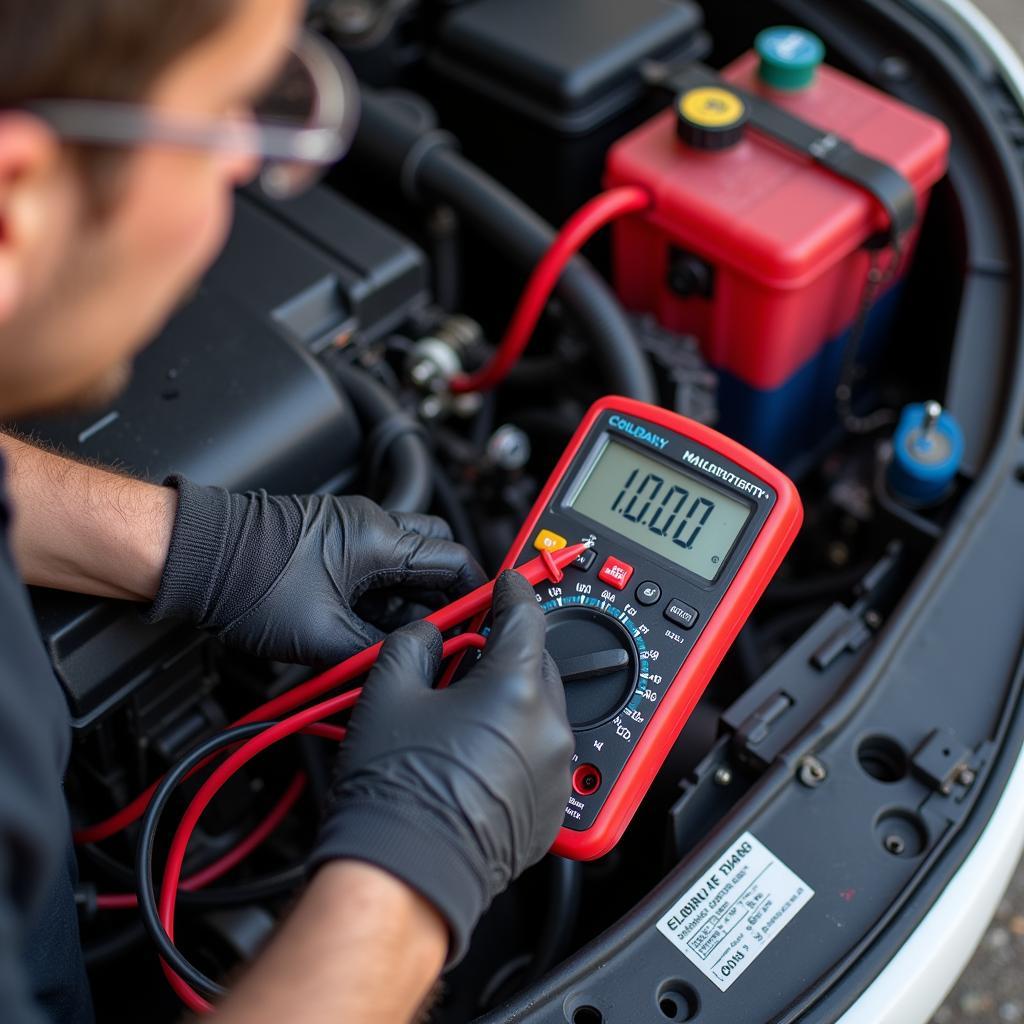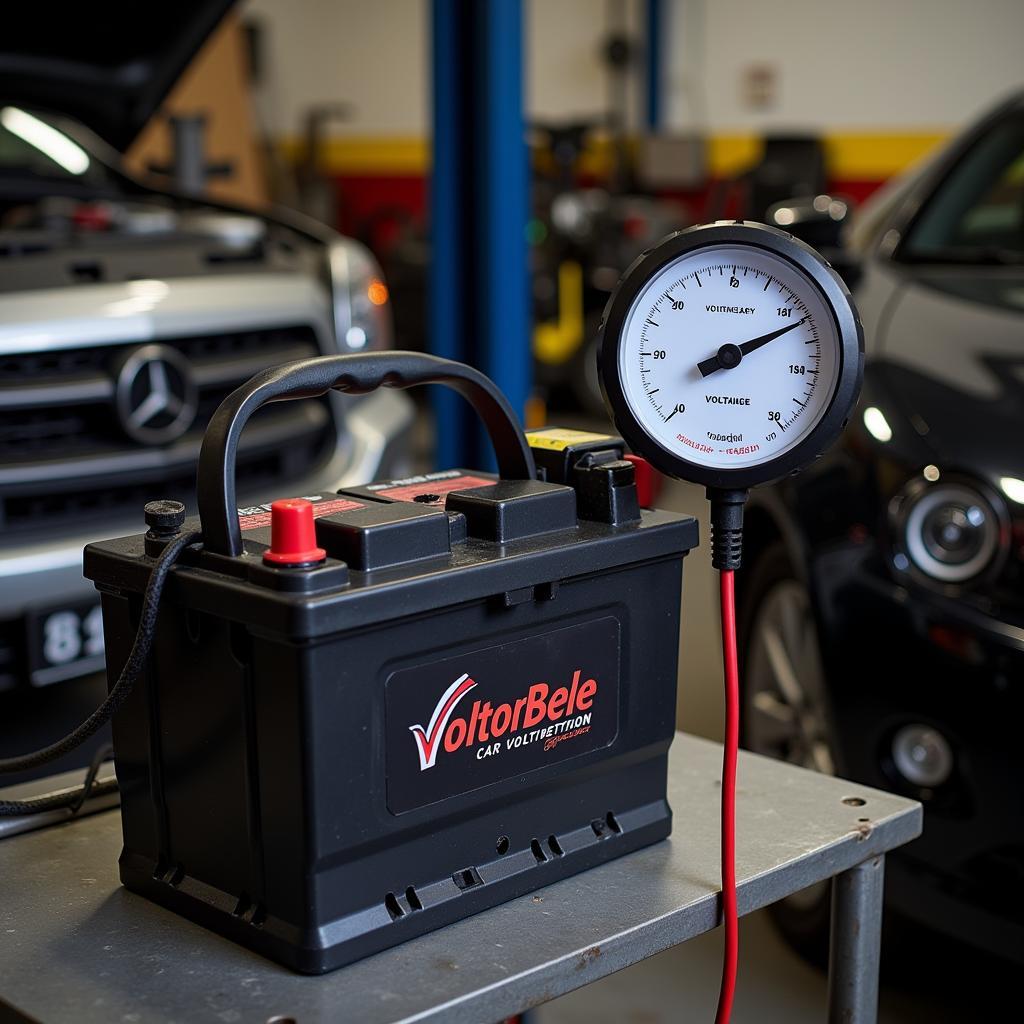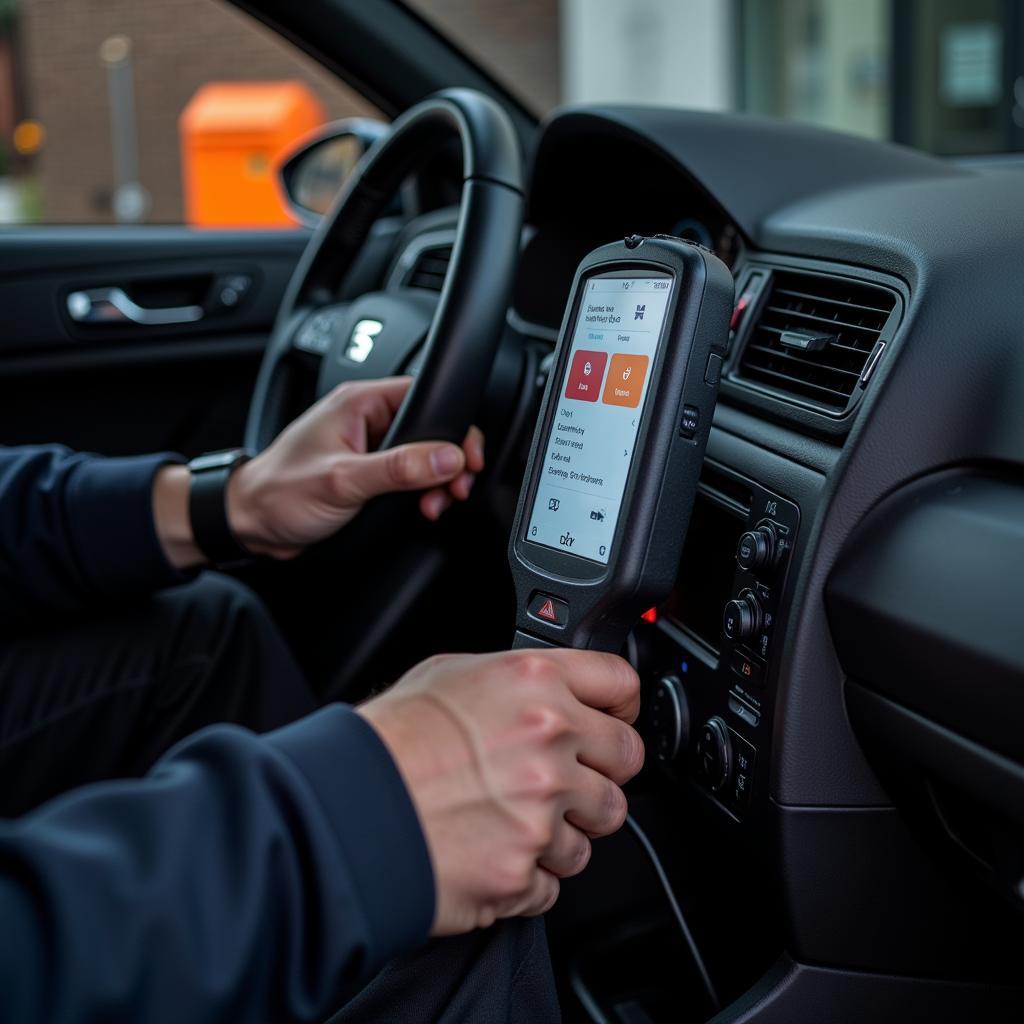A dead car battery is a frustrating experience, leaving you stranded and immobile. Diagnosing a dead car battery is often the first step towards getting back on the road. This guide will equip you with the knowledge and practical steps to effectively diagnose the problem and find a solution.
If your battery keeps dying, you might need a new one. But before you rush to replace it, there are several checks you can perform yourself. Learning how to diagnose a dead car battery can save you time and money. A simple problem, like loose battery terminals, can be easily fixed. More complex problems might require professional help. Let’s begin by understanding the signs of a dead car battery.
Identifying the Symptoms of a Dead Car Battery
Several tell-tale signs indicate a dead or dying battery. These range from obvious to more subtle indicators. Being able to recognize these symptoms will help you quickly diagnose the problem.
- Dim headlights: One of the first signs of a weakening battery is dimmed headlights, especially noticeable at night.
- Slow engine cranking: If your engine cranks slowly or struggles to turn over, a low battery charge is a likely culprit.
- Clicking sound when turning the key: A rapid clicking sound when you try to start your car often indicates insufficient power to engage the starter motor.
- Dashboard warning lights: Modern cars often display warning lights related to the battery or charging system.
- Malfunctioning electrical accessories: Difficulty operating power windows, radio, or other electrical accessories can point towards a battery problem.
- Swollen battery case: A physically distorted or swollen battery case can indicate internal damage and requires immediate replacement.
If your car battery died while driving, it’s a completely different issue and warrants immediate attention. For more information, see our guide on car battery died while driving.
Tools and Safety Precautions for Diagnosing a Dead Car Battery
Before you start diagnosing your car battery, gather the necessary tools and ensure you take appropriate safety precautions.
- Safety glasses and gloves: These protect your eyes and hands from potential hazards.
- Multimeter: This essential tool measures voltage and helps determine the battery’s charge level.
- Battery terminal cleaner: Corrosion on the terminals can hinder proper electrical connection.
- Jumper cables: These are useful for jump-starting the car if necessary.
Always ensure the engine is off and the ignition key is removed before working on the battery. Work in a well-ventilated area as batteries can release harmful gases.
Testing Your Car Battery with a Multimeter
A multimeter provides an accurate measurement of your battery’s voltage. This is crucial for diagnosing a dead car battery.
- Set your multimeter to DC voltage.
- Connect the red probe to the positive (+) terminal and the black probe to the negative (-) terminal of the battery.
- A fully charged battery should read around 12.6 volts.
- A reading below 12.4 volts indicates a low charge, and below 12 volts usually means the battery needs to be charged or replaced.
Remember, even a fully charged battery can fail under load. Further tests may be required to diagnose the root cause of the problem.
 Testing a Car Battery with a Multimeter
Testing a Car Battery with a Multimeter
Beyond the Battery: Checking the Alternator and Starter
While a dead battery is a common culprit, it’s crucial to investigate other components like the alternator and starter. The alternator recharges the battery while the engine is running. A faulty alternator can lead to a perpetually discharged battery. The starter engages the engine, and a malfunctioning starter can mimic the symptoms of a dead battery. Specialized diagnostic tools might be needed to test these components effectively.
Diagnosing a Parasitic Drain
Sometimes, a car battery discharges rapidly even when the car is off. This is often caused by a parasitic drain, where an electrical component continues to draw power even after the ignition is off. Identifying and resolving this drain is essential to prevent repeated battery discharge. This can involve a systematic process of disconnecting circuits to isolate the culprit. If you suspect a parasitic drain, especially in specific car models like the Mini Cooper, you can find more information in our guide on parasitic battery drain mini cooper.
When to Seek Professional Help
While many battery-related issues can be diagnosed and resolved with basic tools, some situations require professional expertise. If you’ve tried the steps outlined above and your car still won’t start, it’s time to consult a qualified mechanic. They have access to advanced diagnostic equipment and the knowledge to pinpoint and resolve complex electrical problems. This is especially important if all your dash lights came on and the car died unexpectedly, as this could indicate a more serious electrical fault. You can find helpful information on this issue in our article about what to do when all dash lights came on and car died.
Conclusion
Diagnosing a dead car battery can be a straightforward process with the right knowledge and tools. By following the steps outlined in this guide, you can quickly identify the problem and determine the best course of action. Remember, regular battery maintenance and timely checks can prevent future issues and ensure reliable vehicle operation. Don’t forget to check your key fob functionality, as a malfunctioning fob can also contribute to battery drain. Learn more about testing your key fob with a key fob tester. If your car battery is discharging fast, read our guide on car battery discharging fast for more information.


